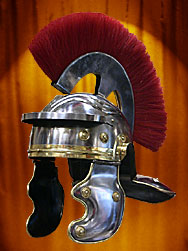 |
 |
||||
 |
|||||
Sales of theatrical clothes and disguises (jabot shirts with or without lace, cape, hats, wigs and Venetian masks, vests and old trousers) for all public, weddings, fancy dress, costumers, and public spectacles.
Also discover on our website all personal achievements, available from stock in our warehouse in Paris.
On our WEB site, you can :
- To buy by correspondence
via this WEB site
and even
CONTACT : THEATRHALL
Phone calls to France: + 33.1.43.26.64.90 (after 15h)
N° VAT Intracomm. - SIRET - APE - RIB - General Conditions of Sale
teatral teatrall teatrale teatrales téâtral
téâtrall
téâtrale téâtrales théâtral théâtrall
théâtrale théâtrales theatral
theatrall theatrale theatrales theatre hall theatre all teatrhall teatre
hall
: medieval, medieval helmet, medieval accessory, medieval armours, helmets,
heaume, helmet of templier, small basin, Roman helmet, Trojan helmet,
helmet Greek, Corinthian helmet
heaumes, helmets of templier, small basins, helmets Roman, Trojan helmets,
Greek helmets, Corinthian helmets
The Romans, who had a great practical direction, started by copying
helmets of the Greeks (model italo-Corinthian), then those of the Gallic
one.
The model of reference thus became the imperial Gallic one with its
many alternatives.
The helmet found in the strong Roman of Buch, in Germany, is one
another example of Roman helmet of cavalry of IIIe century. The absence
lucky finds of models of infantry at this period leaves however
to think that this type of helmet was of use in different the corps.Sa
fine sheet and its absence of visor at the time of the discovery make
to think of an unfinished helmet, but the model opposite was supplemented
in the spirit of the Heddernheim types.
In its rigorous direction, this word was employed originally to indicate
a helmet of skin or leather, in opposition to blackcurrant, which meant
a metal helmet; but, as this last matter was generally
substituted for leather by the Romans, as of the time of Camille, one
lost
soon of sight primitive distinction, and the word galea was employed
by everyone to indicate any species of helmet.
Engraving attached presents a front view and a side view of one
Roman found bronze helmet with Pompéi, where one discovered several
of them
others of form and similar nature. It contains all the parts
ordinary Roman helmet: the cimier with the top of the helmet, to which
was
attached a brush of plusmes or a mane of horse; a projection
ahead and by behind, to protect the face and the nape of the neck; mentonnières,
by which the helmet was attached under the chin; and a visor
bored holes, which covered all the figure like a mask. The small one
ornament, placed beside the convex part of the helmet and which resembles
for a shell, was intended to hold a feather, like one seeing it in
the figure with the word thrax.
Ordinary helmets related by the Roman soldiers to the arcs of
triumph and the columns are of a simpler nature; they are
smaller, without visor, but with mentonnières, and, instead of
brush,
they have a node or a ring at the top, as one sees it in the specimens
attached, taken Trajane column.
The helmets of the centurions resembled those which we gave
in last engraving; but they were provided with a cimier, like
one sees it in the first engraving; sometimes this cimier was plated
of money and decorated dark feathers, which rose with a considerable
height
(Polyb. VI, 21), and was placed transversely on the cimier (Veg. Millet.
II, 16), so as to incline itself ahead and to fold back itself around,
as the engraving, taken of one of the plates represents it below
arc of Constantin, who belonged originally to the arc of Trajan.<br>
The helmets of the Generals and the senior officers were decorated with
more work and resembled the Greek helmets of the last style.
They are seldom represented by the sculpture or painting; because
the large characters almost always have the naked head. Galea pellibus
tecta. The carry-flag on the arcs and the columns are universally
represented like Végèce (Millet describes them. II, 16)
with a narrow Roman helmet,
on which the head and the skin from some wild animal are drawn, of
such way that the figure appears through the jaw between open,
except the mentonnières on the two sides of the figure, as represents
it
engraving attached, catch of the Trajane column.
Galea venatoria. Roman helmet of leather or fur carried by the hunters
(Nepos, Dat. 14, 3); see the specimens with the words cudo and galerus,
1. (aulôpis). The old Greek helmet of the heroic ages was of a
character
very different from those which we described up to now; it had one
motionless mask which adapted to the figure, and left only two
holes for the eyes, so that when it was drawn, it covered
and entirely the face hid; from there the expression galeis abscondunt
(Sil will ora. Ital. XIV, 626; cf Stat. Theb. XI, 373). Engraving represents
two Roman helmets from this kind, both according to clay vases:
first on the left, drawn on the figure, the second such as one carried
it,
when one went up it before or after the combat.
The shape OF the ROMAIN HELMET that we have just described fell soon
in disuse, and then
the regular Greek helmets were made on a model resembling in
General with the specimens hereafter, drawn from clay vases.
They were composed of the distinct parts which follow: kwnoV (apex),
the cimier with the top of the helmet, at which the brush was fixed;
lofoV (crista),
the brush, consistent in a mane of horse: there was sometimes
two or three, as in the figure on the right side; geison, covered
on the front of the figure like a lean-to building, sometimes mobile,
but
more usually fixes; paragnaqideV (bucculae), mentonnières, attached
on each side of the helmet by hinges, and fixed under the chin
by a button or a clasp; faloV, ornament shining, generally formed
by some figure in relief which one placed on various parts of the helmet.
In the figure on the right side, the faloV is composed of two scratch,
put each side of the cimier: such a helmet was called consequently
difaloV. In other specimens, the brush itself is supported
by a similar figure, as well as described Homère (It. XIII, 614),
just below the plume. Sometimes they are seen advancing in one
very bold relief on the front and the sides of the helmet, as in
the colossal statue of Minerve, when the helmet was called amfifaloV

